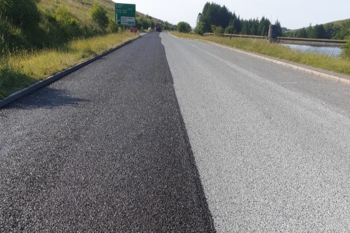
Mike Hansford, chief executive of the Road Surface Treatments Association (RSTA), says it’s time to focus on permanent repairs and what needs to be done to prevent potholes in the future.
A saying in the highways industry is that if you’re fixing lots of potholes, your asset strategy has failed. The fact that potholes are increasing at a faster rate than ever, and that National Pothole Day is etched in our annual calendar, is a sign of failure.
A failure in some cases to implement historic best practice in the maintenance of our roads, through early life preventative maintenance to seal roads and prevent the damaging effects of water ingress, eventually leading to poor condition and unpredictable and expensive potholes.
The RSTA is recommending that some local highway authorities should review their maintenance strategy, and improve their knowledge and understanding of surface treatments, including surface dressing, preservation/rejuvenation, and micro surfacing.
More than 97% of our road network in England and Wales is maintained by local highway authorities. It’s an asset valued at over £400bn, and the biggest physical asset the public sector owns.
The future of transport infrastructure will also see roads play a vital role in supporting the mass adoption of green and smart transport – both in terms of private vehicles and the heavy goods/logistics fleet, as well as low carbon alternatives such as cycling. This includes the transition to net zero highways.
But success will be dependent on highway authorities taking the strategic decision to prioritise long term resilience, lifetime value, proactive, preventative interventions, and more sustainable materials and solutions.
According to statistics from the Road Emulsion Association (REA) there has been a decline in the application of surface dressing from 64.4 million m2 in 2012 (industry sources suggest this was once over 90 million m2) down to 35.3 million m2 in 2023.
.jpg) Research shows the correlation in reduced surface dressing treatments and subsequent increases in potholes over the past decade, so this has undoubtedly contributed to the pothole problem.
Research shows the correlation in reduced surface dressing treatments and subsequent increases in potholes over the past decade, so this has undoubtedly contributed to the pothole problem.
But the decline in the use of surface treatments also represents a failure to leverage the advantages that such a planned preventative approach provides.
A preventive maintenance strategy using surface dressing, offers a significant carbon saving, especially when compared through a whole lifecycle comparison over a 60/90-year period (timescale dependant on traffic volumes) of approximately 76%, in which time, the road would remain in better condition.
Similar cost savings over this same, longer-term period could be up to 66%.
To fully resurface the same road in traditional asphalt using primary aggregate would be significantly higher cost, and without surface treatment intervention, last no longer.
Surface dressing has developed considerably in recent times with polymer modified binders, super-premium grade binders (that are more resistant to heat), and encapsulation systems that make the dressing more resilient, and address many of the issues the public complain about, in relation to loose chippings, aesthetics (it looks like a conventional asphalt), stripping etc.
There are undoubtedly financial challenges in the industry and a much-needed longer term commitment to highways funding is required, but it’s equally important that the future of road maintenance includes the adoption of preventative maintenance strategies to support ‘sustainable asset management’ (quoted recently in the DfT local authority funding announcement).
The RSTA also seeks to promote permanent solutions to the existing issue of potholes, instead of focussing on intervention only defects (fulfilling Section 58 defences). To include methods of spray injection, thermal, screed and conventional patching, but also correct installations around ironwork.
Updates in data collection technologies will support programmes of capital planned patching work.
Roads riddled with potholes and beyond patch repair (caused by poor drainage, untreated surfaces, poor construction depths) should be considered for more permanent solutions such as resurfacing (consider options of geosynthetic layers to reduce the thickness of asphalt reinstated), or alternative ex-situ and in-situ recycling methods, which repurposes existing material to form a sound base on which to lay a new surface. Scheme designs should also incorporate any drainage improvement or maintenance work required.
It’s important that engineers understand the full range of treatment options, when they might be appropriate, and when other treatments might offer a better solution.
The RSTA will be running a series of ‘lunch and learn’ type sessions on each of the different treatments and will be launching a preservation and rejuvenation campaign later this month.













